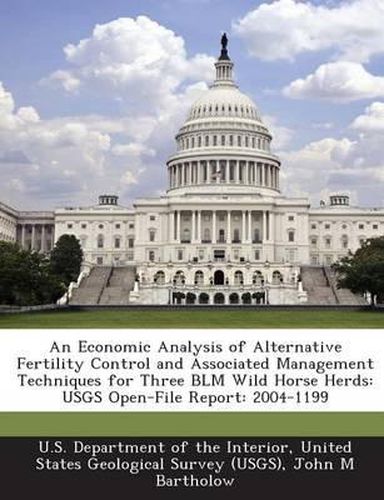Readings Newsletter
Become a Readings Member to make your shopping experience even easier.
Sign in or sign up for free!
You’re not far away from qualifying for FREE standard shipping within Australia
You’ve qualified for FREE standard shipping within Australia
The cart is loading…






Managing wild horses (Equus caballus) as dictated by the Wild Free-roaming Horse and Burro Act of 1971 (as amended) has proven to be costly. Legislation has restricted options used to manage populations; sanctuary and adoption alternatives have been expensive and less than fully effective (U.S. General Accounting Office, 1990; Conover, 2002). Herds continue to grow, often at high rates (6% to 25% or more; Eberhardt and others, 1982; Wolfe, 1986). Budgetary limitations demand tough decisions on how to best minimize expenditures yet still meet legislated goals to maintain a \“thriving natural ecological balance\” and preserve existing multiple-use relationships, including rangeland health (U.S. General Accounting Office, 1990). Fertility control appears to be one option worth evaluating for cost effectiveness. It is viewed as humane (Reiter and others, 1999), safe and reversible (Kirkpatrick and Turner, 2002), and has been shown to successfully complement other methods of population control for wild horses (Garrott, 1991; Garrott and others, 1992; Gross, 2000; Hobbs and others, 2000). BLM has maintained a database for state-by-state herd monitoring, census, selective removal, preparation and holding, adoption, compliance check, and other program costs. These new data have been used to compute estimates similar to those from Garrott and others (1992) for the early 1990s. In this paper, I update cost estimates using 2004 management expenses and currently available contraceptive technology for three specific BLM-managed wild horse populations. The three herds were chosen by BLM based on availability of data suitable for population modeling, and because they represented three different western states, different habitats, and herd sizes that characterize a majority of the managed populations.
$9.00 standard shipping within Australia
FREE standard shipping within Australia for orders over $100.00
Express & International shipping calculated at checkout
Stock availability can be subject to change without notice. We recommend calling the shop or contacting our online team to check availability of low stock items. Please see our Shopping Online page for more details.
Managing wild horses (Equus caballus) as dictated by the Wild Free-roaming Horse and Burro Act of 1971 (as amended) has proven to be costly. Legislation has restricted options used to manage populations; sanctuary and adoption alternatives have been expensive and less than fully effective (U.S. General Accounting Office, 1990; Conover, 2002). Herds continue to grow, often at high rates (6% to 25% or more; Eberhardt and others, 1982; Wolfe, 1986). Budgetary limitations demand tough decisions on how to best minimize expenditures yet still meet legislated goals to maintain a \“thriving natural ecological balance\” and preserve existing multiple-use relationships, including rangeland health (U.S. General Accounting Office, 1990). Fertility control appears to be one option worth evaluating for cost effectiveness. It is viewed as humane (Reiter and others, 1999), safe and reversible (Kirkpatrick and Turner, 2002), and has been shown to successfully complement other methods of population control for wild horses (Garrott, 1991; Garrott and others, 1992; Gross, 2000; Hobbs and others, 2000). BLM has maintained a database for state-by-state herd monitoring, census, selective removal, preparation and holding, adoption, compliance check, and other program costs. These new data have been used to compute estimates similar to those from Garrott and others (1992) for the early 1990s. In this paper, I update cost estimates using 2004 management expenses and currently available contraceptive technology for three specific BLM-managed wild horse populations. The three herds were chosen by BLM based on availability of data suitable for population modeling, and because they represented three different western states, different habitats, and herd sizes that characterize a majority of the managed populations.